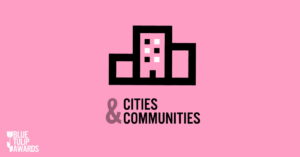If you’re a designer, then you know that user experience is key. Creating an effective and user-friendly interface is essential for any successful design project. UX designers are now used in marketing for product testing. The testing helps spot mistakes, correct errors, and make a design conclusion. Luckily, there are several great UX tools out there that can help you accomplish just that. Some of these tools are affordable and encompass many features to make design easy and less time-consuming. Some require no coding to develop a suitable design for your product or brand. In this blog post, we’ll look at five essential UX tools every designer should know about. So without further ado, let’s get started!
1. Overflow
UX designers widely use overflow because of its vast features. The tool enables users to connect layers to the screen without needing hotspots. You can fully customize designs to fit a brand or personal style by editing colors, labels, and more. As you can see at overflow.io, this tool allows users to create logical flows with shapes, connectors, texts, and device skin. The tool automatically applies design skin that is compatible with all devices. You can add details through text and shapes to make a website intuitive. Diagrams can be divided into subflow or multiple boards for easy navigation.
2. Framer
A framer is an excellent tool for interactive and stunning designs. The tool has customizable components. Layouts, polished assets, etc., which are compatible with different devices. It also has ready-made templates such as Landing Page Kit, an iOS Kit, and a Material Design Kit. The templates include project management, website, and app templates. The app also has a real-time collaborative feature linking you with writers, developers, and other designers. The feature allows you to easily invite teammates during the process, with a comment section for teammate responses. The tool has interactive features such as to-do lists, galleries, forms, and carousels. You can create realistic UI interaction, animation, and transition with the available interactive components with exact behavior. The features determine how the design will interact and transmit it in real-life user interaction on the website or product.
3. Origami Studio
Origami Studio is considered a prototyping tool efficiently used in creating Facebook. The internal usage of this tool makes it a great choice for a UX designer who intends to save time and capital. The tool is known for creating deep interactions within pages divided into subsets. The features make it perfect for displaying a prototype of complicated pages on a website or mobile app. A whole prototype application design cannot be accomplished using Origami Studio. The tool is recommended for expert designers due to its complicated usage and is perfect for small pages, specific pages, and micro-interaction. UX beginners will find it difficult to use this tool for their designs.
4. Balsamiq
Balsamiq is a design tool known for its rapid wireframing feature. The tool is used by many in the industry to impact a level of accuracy to design. You can get a desktop or Cloud app version to make in between interactions between product managers, designers, and developers working on a project. The tool has unlimited features to choose from in its User Interface library of tools. Balsamiq has the drag-and-drop feature to shift things from the screen to the wireframe easily. You can also print your prototype or pass the design through usability online tests on this app. The testing will spot and resolve errors before passing them to the developers.
5. Maze
Maze is commonly used as a rapid testing platform. The platform provides modern actions such as user insights in a few hours. The actionable feature is for user-facing experiences, single and multiple usage, remote design testing, collaboration, and the transformation of the results into readable and necessary metrics. The maze was created to substitute qualitative testing tools, which are time-consuming and expensive to afford, especially for beginners. Maze allows every designer to test their designers before the conclusion. The features include:
- Surveys.
- Usability tests.
- A democratic testing process is available for the whole team.
- Increased user insight accessibility company-wide.
Maze creates an opportunity for products and marketing teams to test a design prototype, copy, shift and receive user feedback in one place. The user insight collected is used to improve the user experience.










